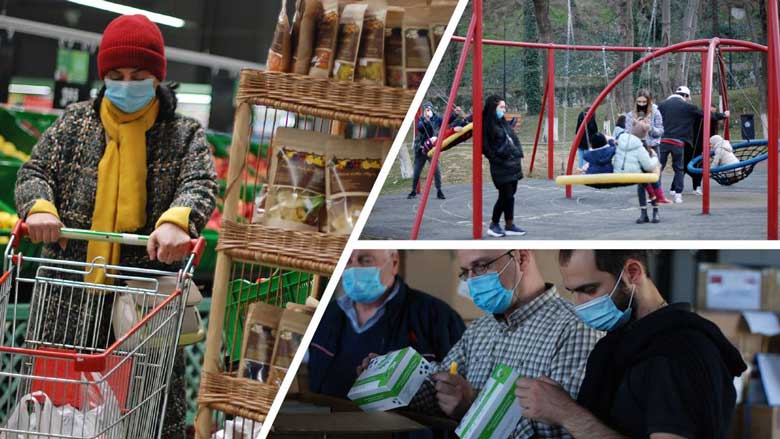Georgia is emerging from the COVID-19 crisis, but the pace of recovery may be different across space and sociodemographic groups. In addition, the war against Ukraine and sanctions on Russia is expected to hit economies around the globe, including Georgia. These profound impacts of the crises underscore the urgency of timely data and real-time analyses for countries to quickly and effectively mitigate the effects of the shock and lay the groundwork for future resilience. To support the Government emerge resiliently from these crises, the South Caucasus Poverty and Equity team at the World Bank has collaborated with various partners to collect series of high-frequency phone surveys (HFPSs) that can be used widely to monitor the evolution of the crises and its impacts on households and firms.
This webpage serves as a platform to share the HFPSs collected and the analyses produced for Georgia by the World Bank and other development partners.
Household COVID-19 monitoring survey
Partnering with the Swedish International Development Cooperation Agency (Sida) and Caucasus Research Resource Centers (CRRC), the South Caucasus team in the Poverty and Equity Global Practice at the World Bank conducted a series of COVID-19 Georgia High Frequency Survey (GHFS) to monitor the impact of COVID-19 and high inflation on households in Georgia. The first wave was collected in Dec 2020, followed by wave 2 collected in Jan/Feb 2021, wave 3 in March 2021, and the fourth wave collected in June 2021. The latest, fifth round of the survey was collected in March 2022.
The Georgia COVID-19 High Frequency Survey (GHFS) 2020-22 covers the following topics: Household Identification (Wave 1, 2, 3, 4, 5); Household Demographics (Wave 1, 2, 3, 4, 5); Assets and Access to Internet (Wave 1, 2, 3, 4, 5); Prevalence of COVID-19 (Wave 1, 2, 3, 4, 5); Distance Learning and Disruption in Schooling (Wave 1, 2, 3, 4, 5); Employment Dynamics (Wave 1, 2, 3, 4, 5); Income (Wave 1, 2, 3, 4); Food Security (Wave 1, 2, 3, 4, 5); Shocks and Coping Strategies (Wave 1, 2, 3, 5); Vaccine (Wave 1, 2, 3, 4, 5); Remittances (Wave 2, 3, 4); Perception (Wave 1, 2, 3, 4, 5); Impact of high inflation (wave 5); and Gender gap in time spent at home (wave 5).
The COVID-19 GHFS series is designed so that it also serves as the follow-up to the CRRC Covid-19 Monitor, Waves 1-6, 2020 that were conducted between April and June, 2020. The survey covers a wide range of topics – ranging from institutional performance to approval of newly introduced policies and perceptions on economic situation.
Firm COVID-19 Monitoring Survey
For firm-level analyses, the team collaborated with the Enterprise Survey (ES) team to collect data on firms that are representative of the private sector. The surveys cover a broad range of business environment topics including access to finance, corruption, infrastructure, crime, competition, and performance measures.
In Georgia, the survey was first collected between March and December 2019 to serve as a baseline to estimate the impact of COVID-19. The second round was collected in June 2020 by phone-interviews to enterprises that had previously participated in the 2019 ES. This second round, follow-up survey in Georgia interviewed 581 Micro, Small and Medium Enterprises (MSMEs).
Poverty Projections Based on Nationally Representative Household Survey
The World Bank has produced a number of analytical pieces to address the short-term impact of the COVID-19 outbreak on poverty and distributional outcomes in Georgia, using data from the latest nationally representative household survey as the main data source (2018 Household Incomes and Expenditure Survey).
Three types of analyses were conducted sequentially: projections through poverty/growth elasticity methods assuming neutral impact of COVID-19 based on macroeconomic projections, micro-simulation incorporating possible distributional impact of COVID-19 on household welfare and inequality, and impact assessment of COVID-19 on household welfare incorporating mitigation policy responses.
